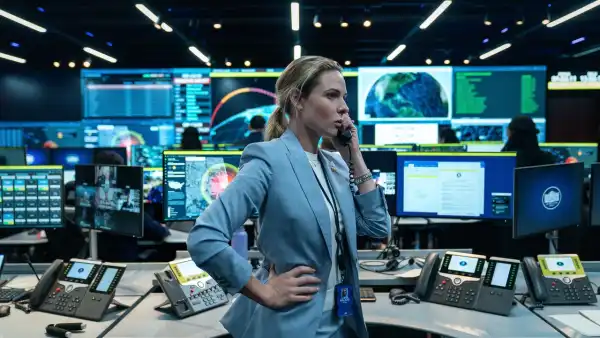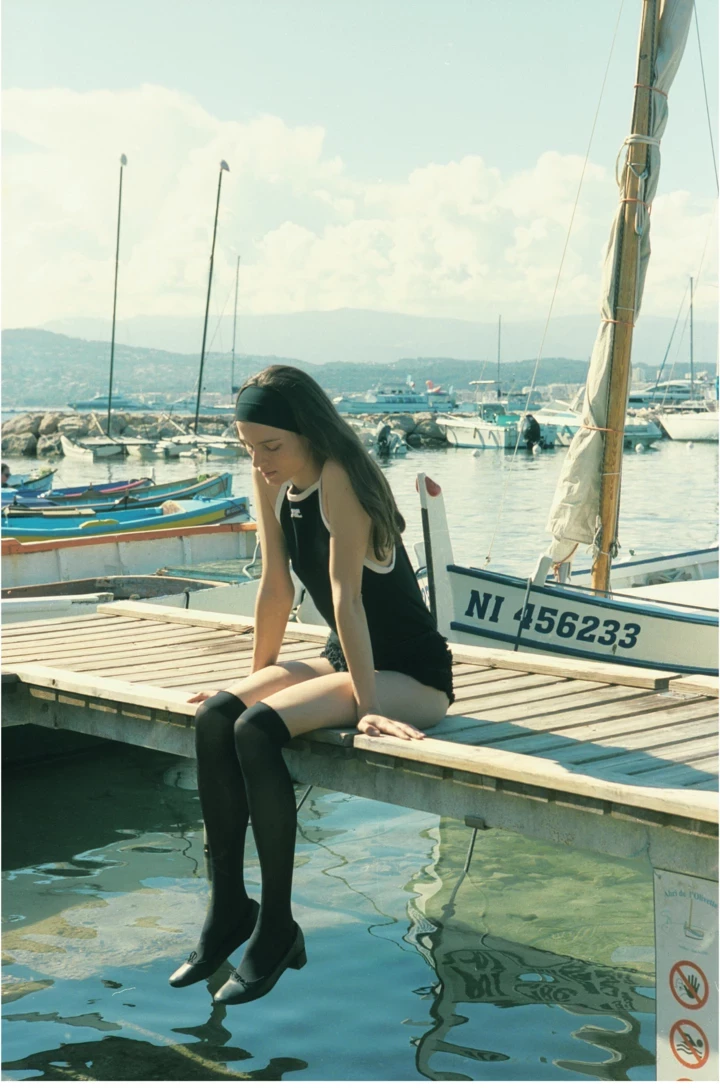
Save this storySave this storySave this storySave this story
It has been a while since Francis Ford Coppola made a new feature—and a very long while since he made his greatest ones. (I’m hoping that his forthcoming “Megalopolis” proves to be a late-career masterwork.) Meanwhile, he has been tinkering with some of his earlier works, including ones that deserve to be considered classics but were wrongly damned in their day. His 2020 reworking (fortunately slight) of “The Godfather: Part III” gave it a well-deserved new prominence and, I hope, shamed the many critics who’d panned it initially. Now he has turned his attention to “One from the Heart,” which was a critical flop at the time of its release, in 1982, but which returns to theatres Friday in a modified version, under the title “One from the Heart: Reprise.”
“One from the Heart” is a musical romance of a distinctive sort: the songs aren’t sung by on-camera characters but are, essentially, musical voice-overs. Written by Tom Waits and performed by him and Crystal Gayle, they accompany the movie’s action as if they were a commentary emanating from within the characters’ minds. Though the main characters don’t sing, they do dance: there are some spectacular and densely populated production numbers, and, moreover, people often seem to be dancing even when they’re just walking. The stylized relationship of the soundtrack to what’s happening onscreen is matched by the movie’s images. The story is set in Las Vegas, but in a conspicuously artificial, grandiosely theatrical version of the gaudy city, created on vast soundstages. The scope of the real-life city is filtered out in favor of a dazzlingly ornate distillation. Coppola’s unconventional artistic choices—not to mention his decision to film this particular story, a romantic drama of a couple in crisis, in the first place—can be traced to the circumstances he found himself in after making his previous movie, “Apocalypse Now.” “One from the Heart” is a film whose genesis is intimately bound up with how it came to grief.
The film begins on the Fourth of July, which also happens to be the fifth anniversary of Frannie (Teri Garr), who works at a travel agency, and her boyfriend, Hank (Frederic Forrest), whose work involves a junk yard where much of the action takes place. They’ve bought each other anniversary gifts: she proffers a pair of tickets for a trip to Bora Bora, where she has long dreamed of going; he hands her the deed to the house where they live. Uh-oh: Frannie doesn’t want to keep that house or even stay in Vegas; she wants to travel, and he wants to stay put. He wants to have a child; she doesn’t—at least, not yet. They have a fight, they bitterly break up, and both leap instantly into rebound affairs: Hank, with a circus performer named Leila (Nastassja Kinski); Frannie, with Ray (Raul Julia), a singer-slash-waiter. The rest of the movie hangs on whether the couple will get back together.
Coppola, who wrote the script with Armyan Bernstein, leaves the characters thinly defined; where they’re from, what their interests and inclinations are, all remain undisclosed. (The strongest backstory involves recriminations over Frannie’s flirtation with Hank’s best friend, Moe—played by Harry Dean Stanton—and Hank’s affairs with Moe’s former girlfriend and with a “tall blonde.”) The story has a pared-back simplicity, and its characters are essentially archetypes. This dramatic scantiness isn’t a bug but a feature, a defining trait of a movie that takes a drastic and original approach to the very notion of character, to the essence of subjectivity in cinema.
Much of “One from the Heart” is filmed in sinuous and roving long takes that follow the characters through the teeming décor. On-set special effects, such as the extensive use of painted mattes, enable Coppola to shift surreally from one set to another—creating overlaps, disjunctions, and artificial continuities between disparate spaces. Disorientingly large closeups loom like billboards beside small figures; pointillistic arrays of light bulbs and hallucinatory squiggles of neon meet shifting splashes of color from lighting palettes of an acidulous intensity; amid rapidly varying schemas of brightness and shadow, characters appear sometimes full-face, sometimes as mysterious silhouettes. All this conjures a visual music even more intensely expressive than the music on the soundtrack. Such eye-jangling creations do more to imply subjective depths in these minimally defined characters than any number of dramatic twists and turns would have. Coppola’s spectacular image-track is some of the best work of his career, giving fantasy pride of place in ordinary life and making the banal wondrous.
This giddy phantasmagoria marked a drastic departure for the director. The movie plays almost like Coppola’s reaction against his previous decade of acclaimed movies—the two “Godfather” films, “The Conversation,” and “Apocalypse Now.” What those works share is realism, and, as great as they are, they had left Coppola no room to explore the aesthetic side of filmmaking. In his grand-scale dramas, he does a decent job of photographing actors acting and explosions exploding, and he proves himself a master of orchestrating colossal set pieces, eliciting great performances, and rendering the drama intensely plausible and vivid. The physical realism of “Apocalypse Now,” with its gruelling location shooting in the Philippines and its real-life explosions and airborne military aircraft, was so extreme that Coppola in effect filmed it like a documentary. Style had to take a back seat. But, in “One from the Heart,” the events onscreen are fabrications; the reality comes from within, from the cinematic painting, from the seemingly thick impasto of light and shadow and the compositional finesse of stylized movement. This was Coppola’s bid to take his place among the cinema’s image-masters, such as F. W. Murnau and King Vidor, who took bare-bones stories of an abstracted simplicity—at the edge of legend—and endowed them with overwhelming power through sheer visual impact.
For all the artifice of its images, “One from the Heart” is also a highly personal work. This period in Coppola’s career is newly recounted in remarkable detail by Sam Wasson in his book “The Path to Paradise,” which makes clear that the making of “Apocalypse Now” had brought the marriage of Francis and Eleanor Coppola to a crisis point. Coppola had dragged his family halfway across the world for the drastically demanding location shooting, and Eleanor often found herself having to contend with his outrageous practical demands. Like Frannie in “One from the Heart,” she was frustrated by her partner’s script for what the relationship should look like; like Frannie, she was upset by his philandering. (And, like Frannie—who creates the travel agency’s elaborate window displays—she’s an artist.) Coppola betrays an adamant self-awareness about the dynamics of his and Eleanor’s marriage. It’s clear throughout the film that, if the two of them are going to get back together, it will involve Frannie giving up her dream in order to fulfill Hank’s.
Exhausted by the filming and the high-wire financing of “Apocalypse Now,” Coppola wanted to stay home and to work cheaply. Newly flush from the ultimate success of that film, he decided to turn his production company, Zoetrope, into an actual studio, acquiring an old Hollywood lot and filling it with a new generation of electronic equipment. He believed that new video technology would enable him to apply the efficiencies of TV production to the medium of film, and thus make big movies on the kind of modest budget that would insure artistic independence. His plan was to create video sketches of his shots and then realize them on film, shooting TV-style with multiple cameras, both film and video. Editing was to take place almost in real time, as a video rough cut that could then be applied to the celluloid version. He would end up with a series of ten-minute takes that merely needed to be laid end to end in order to deliver a feature.
But, as it turned out, Coppola had merely traded one form of chaos for another. His idea for a new kind of studio ended up being just as grandiose as his location work for “Apocalypse Now.” The budget for the new movie ballooned to colossal proportions because Coppola expanded its sets to multiple soundstages and required astonishing quantities of equipment, materials, and personnel. Although the cinematographer Vittorio Storaro and the production designer, Dean Tavoularis, managed to persuade Coppola to use just one camera at a time, the shoot was far from conventional. For a start, the script was being rewritten on the fly and the actors had little grasp of their characters even as the cameras rolled.
Coppola’s natural extravagance was showing through in other areas, too. Zoetrope was, at the same time, producing Wim Wenders’s “Hammett” and developing a host of other productions (including ones by Martha Coolidge and Franc Roddam). It was also releasing and co-producing foreign films and had become a sort of mega-salon for such filmmakers as Jean-Luc Godard, Gene Kelly, and Michael Powell. (The parties were legendary.) The result was that, just one week into the shoot of “One from the Heart,” Coppola was unable to meet payroll. To make the film, he told the press, he would be forced to put his own property up as collateral each week, a million dollars at a time.
This chaos followed the film through to its release, as Lillian Ross reported, in The New Yorker, in a harrowing account of Coppola’s battle to get it into theatres. (The article is republished in a recent collection of her work, “Film Business,” for which I wrote the introduction.) The movie’s spiralling costs meant that it now had to be a blockbuster just to break even. But the business-side conflicts had been widely reported, and—exactly as had happened with Michael Cimino’s “Heaven’s Gate,” in 1980—Coppola’s grand ambitions generated negative publicity. Unlike “Heaven’s Gate,” however, which, for all its directorial originality, is a classic character-driven Western, “One from the Heart” presented audiences with a puzzle. There is an aesthetic challenge in the disjunctions it presents—between the actors’ naturalistic performances and the archetypal nature of the characters they play, and also between the gritty street poetry of Waits’s songs and the gaudy visual extravagance on the screen. The movie was a commercial disaster. Coppola lost his studio and was left with debts that eventually forced him—and Eleanor—to declare bankruptcy.
The movie’s tonal disjunctions don’t trouble me and never have, ever since I first saw it, around 1985 (thereby hangs a tale), although I think that the film might have been better received had it been even more stylized, with performances more attuned to the visual artifice. At the very least, critics wouldn’t have had to exert themselves puzzling out what kind of movie it was. Unfortunately, whatever confusion “One from the Heart” met with in 1982 isn’t likely to be dispelled by Coppola’s latest revision. (He made a previous revision for a 2003 rerelease which came out on DVD the following year; I haven’t been able to compare that to the 1982 version, but Coppola called the changes minor.) The pacing of the film in the new “Reprise” cut seems to be tightened up, which only heightens the confusion, because the extended camera-driven spirals and curlicues—the movie’s core inventions—have a sinuously lyrical pace that create their own gradual sense of time.
The biggest change involves the rearrangement of scenes near the beginning. Now Frannie and Hank meet Ray and Leila, respectively, a little sooner, after which the movie loops back to things that happened before. This disrupts the forward momentum of the original, muddling its story’s clarity. (It also creates an embarrassing continuity error: previously, one of the first things Frannie does after walking out on Hank had been to get a perm: now her hair gets permed and unpermed again.)
Perhaps the most telling change of all is one ostensibly small trim. In the original version, it’s revealed that Hank bought the house with the couple’s shared money—money that’s as much Frannie’s as his—and he justifies himself by declaring, “I know best.” That’s gone. Perhaps Coppola wants to render Hank more sympathetic, but this is a plot point that, given the movie’s backstory, bears an enormous personal weight. The confessional anguish that went into the movie—the intimate price of pursuing a solo dream as a couple—is already masked in abstraction, in characters whose definition is kept vague, in a tale that’s most notable for its artifice. The allegorical reflections of real-life conflicts provide the drama with its emotional energy, but the latest fiddling with key scenes renders them dim. None of this, however, detracts from the fact that “One from the Heart” is a pivotal film in Coppola's career, one that vastly expanded the range of his art. The best of his work in the decade that followed—"Rumble Fish," “Tucker: The Man and His Dream,” “The Godfather: Part III,” and “Bram Stoker's Dracula”—distilled the visual inventiveness and imaginative furies that had been unleashed into more detailed, less abstracted dramas. So it is good to have “One from the Heart” back in theatres, and I hope that it finally gets the acclaim and the respect that it deserved from the start. ♦
Sourse: newyorker.com







